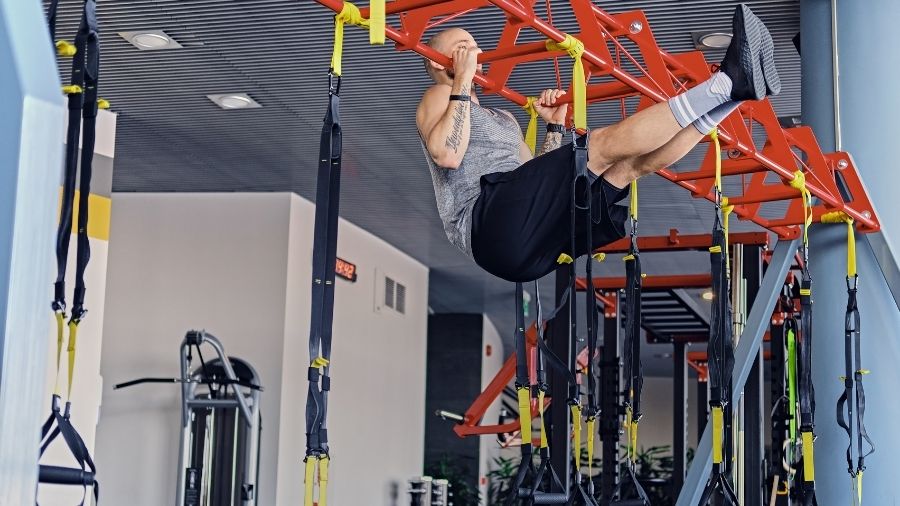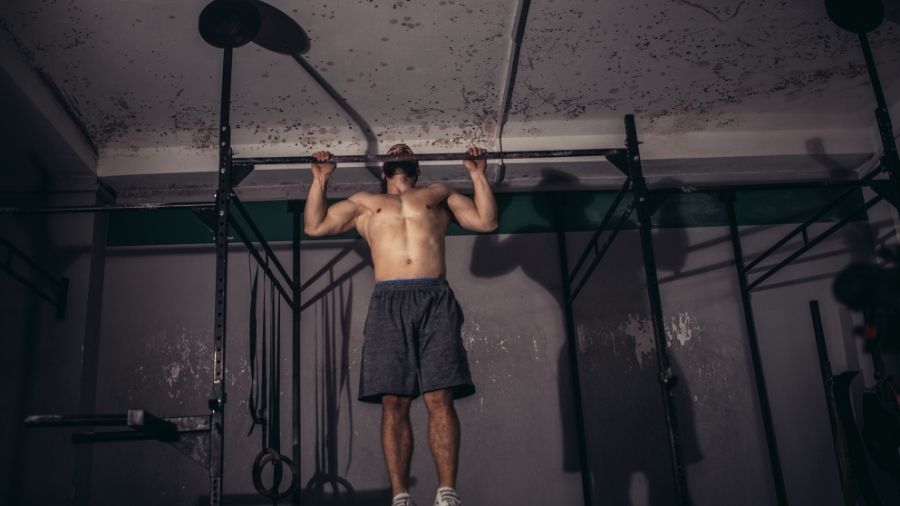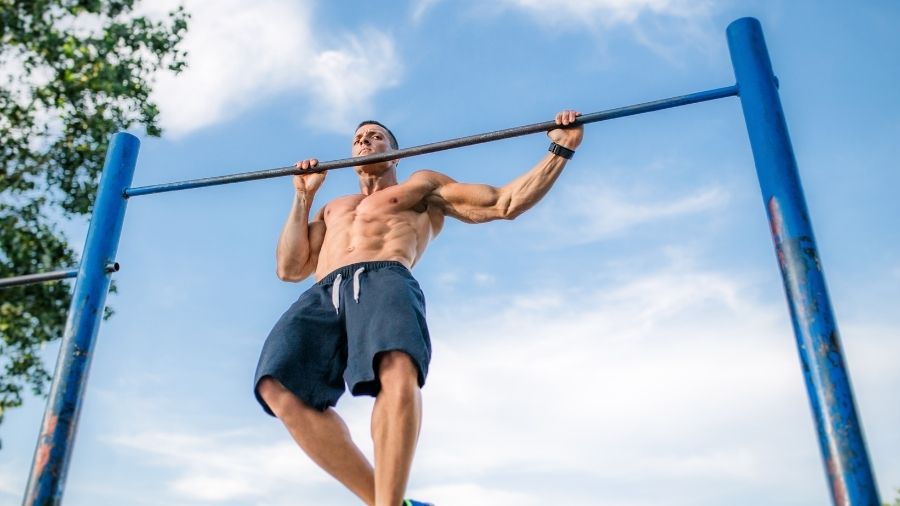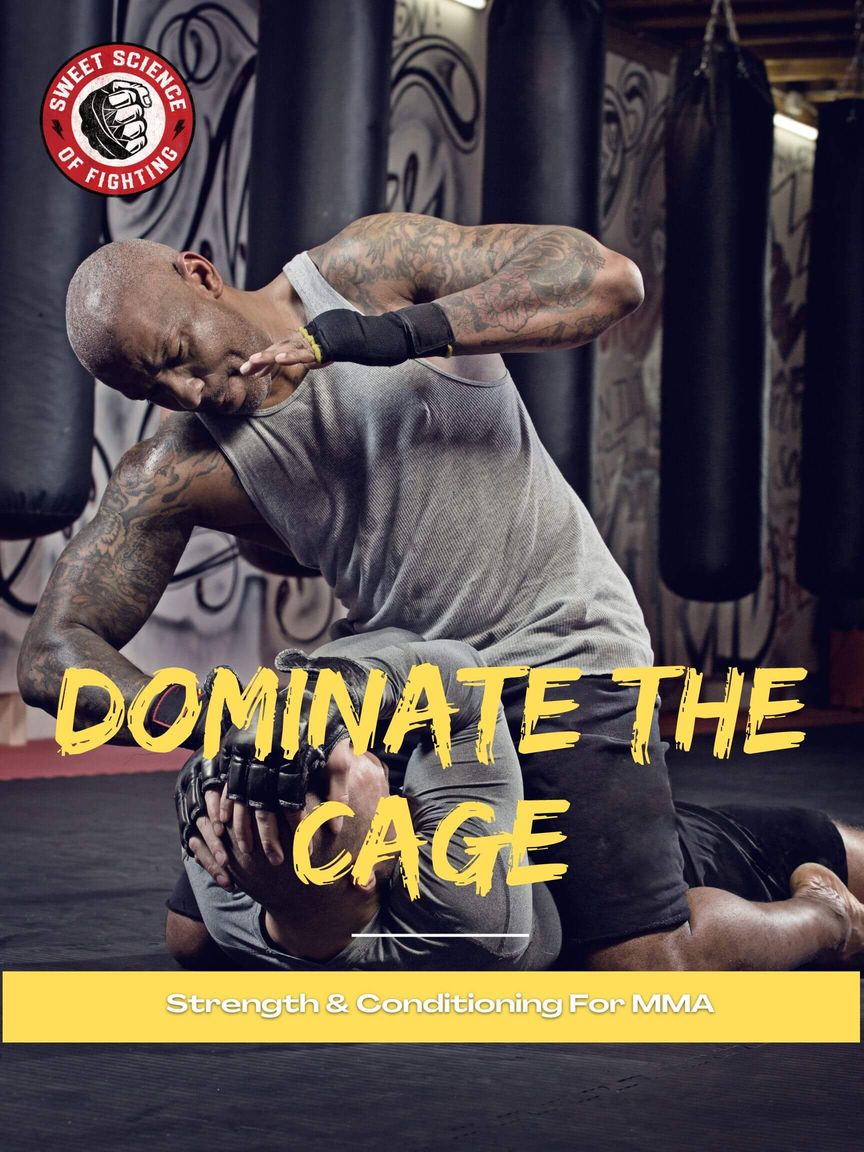There’s a reason the pros perform the pull-up for MMA as part of their strength training. You don’t need any special equipment and the pull-up provides balance to the upper body and develops the muscles of the back better than many other exercises without the high levels of fatigue associated with other compound lifts.
Pull-ups are a staple strength exercise in many MMA training programs because they develop upper body pulling strength which doesn’t get touched on during MMA technical training.
But that’s not the only reason you should be doing pull-ups for MMA. They may even help your ability to fight.
Are Pull-Ups Good For MMA?

Pull-ups are a great exercise for MMA as it transfers well to grappling and wrestling situations. If you want a strong body lock when fighting for under hooks, or a strong clamp when shooting a takedown, then pull-ups will help you get there.
Further, much of MMA is performed with your arms in front. Throwing punches and pushing to create space. Pull-ups are a way to balance out the immense time spend with the arms in front of the body.

How to Dominate Every Fight with Raw, Explosive Power No One Can Match
Discover the underground blueprint that has quietly turned MMA hopefuls into legends, using nothing but sheer, brute force and bulletproof conditioning techniques.
You train the pulling motion which develops the muscles of the back that can reduce your risk of injury by providing structural balance to your upper body. Secondly, you get to have your arms overhead with a loaded stretch when hanging.
Many fighters can lose the ability to put their arms overhead as the typical fighting posture or rounded upper back and shoulders can stiffen the thoracic spine which is vital for overhead mobility. The loaded stretch when hanging during a pull-up can lengthen the lats and improve shoulder mobility.
Do UFC Fighters Do Pull-Ups?
UFC fighters will often perform pull-ups as part of their MMA strength training. You have the likes of Connor McGregor showing his chin-up technique on Instagram.
You can even find videos of Jon Jones busting out pull-ups. Safe to say, UFC fighters perform the pull-up as part of their training.
Do Pull-Ups Help In A Fight?
Pull-ups don’t directly help you in a fight but will help develop the necessary upper body strength to express your skills within a fight. Winning an MMA fight comes down to many factors such as your technical skill, tactical awareness, and how you prepared for the fight.
Your physical ability is going to help you express these skills and tactics to your greatest potential. Pull-ups will develop your upper body pulling strength which is vitally important in grappling exchanges.
They will not only develop your strength in these positions but also strength endurance of the upper body so you resist fatigue.
Can You Do Pull-Ups Every Day?

Many people will do pull-up challenges like 20, 50, or 100 pull-ups a day. While this is great for the general fitness crowd, doing pull-ups every day isn’t the best idea as an MMA fighter. You have so many skills you need to touch on each week.
Finding the time and energy to address them all is difficult. Adding pull-ups every single day is another physical stressor you don’t need to add to your training week. Further, doing pull-ups every day can lead to overuse injuries such as elbow tendon pain which will force you to scale back your MMA training.
How To Do The Perfect Pull-Up For MMA?
The perfect pull-up does exist. And no, you won’t see it at the local CrossFit gym. A pull-up should be strict to isolate the upper body. That means no momentum to help get your chin over the bar. Here is a step by step:
- Place your hands over the bar outside shoulder width. You’ll have to play with your grip width to see what is comfortable for you. You don’t want to use a wide grip as you are not as strong in that position.
- Place your thumb over the bar instead of around. This will allow you to use your pinky fingers and you’ll be able to feel your lats better instead of just feeling your arms burning out.
- Instead of thinking about pulling yourself up, think about pulling your elbows down to your ribs. You should keep a big chest throughout the movement which will keep your shoulders back.
- Try to touch your chest to the bar. If you can’t get there, that is fine. At least get your chin over the bar.
- Slowly lower yourself back down until your arms are straight.
Avoid any swinging of the legs to help you when doing pull-ups. You’re doing pull-ups to develop upper body strength not to see how many pull-ups you can do with bad form.
Pull-Ups vs. Chin-Ups For MMA

You can use either pull-ups or chin-ups for MMA. The difference between the two is the pull-up is done with a pronated grip (i.e. overhand or palms facing away from you) and chin-ups are done with a supinated grip (i.e. underhand or palms facing towards you).
Chin-ups can also be done with a neutral grip with the palms facing each other. The chin-up is easier to perform because the position is advantageous for your biceps to contribute to the chin-up but cannot help as much during the pull-up.
For MMA, mix up your grips. Use all different palm positions and grip widths within your training. This will keep your elbows healthy and develop strength regardless of your hand position.
Pull-Up Alternatives For MMA
You don’t have to be stuck with the traditional pull-up. There are many alternatives you can use to develop pulling strength and power.
Weighted Pull-Ups
Once you become proficient with the pull-up, you’ll need to start adding weight to develop unreal pulling strength. No one will be breaking your seatbelt or Gable grips when you can do heavy weighted pull-ups.
Load these with a dip belt or with a dumbbell between your legs. I like to cap reps at 6 for the weighted pull-up. Anywhere from 3-6 reps gives the best progress in strength. You can use any grip as well!
Lat Pulldown
The lat pulldown is the opposite of the weighted pull-up. Instead of adding external load to bodyweight, you are now unloading bodyweight so you can perform more reps. If you’re looking to move up a weight class and need to pack on some mass, then the lat pulldown will allow you to get enough volume to spur muscle growth.
I prefer using the V-handle for a neutral grip when using the pulldown. It will give you the greatest stretch on the lats and the best lat contraction at the bottom.
Towel Pull-Up
The towel pull-up is the most advanced pull-up variation and is one of my favorites. It will tax your grip like no other exercise transferring well to the cage where you need to grip opponents while wearing thick gloves.
Expect your total number of pull-ups to drop by at least half so I’d do these after performing regular pull-ups unless your grip is very strong. You can hear me talk about towel pull-ups in the podcast below!
Thick Bar Pull-Up
Just like the towel pull-up, the thick bar pull-up will also drop your pull-up numbers as your grip fatigues quickly. If you don’t have access to a thick bar, you can use Fat Gripz which simply attaches to the bar. You can see them in action in the video below:
Again, I would do these in a separate session as a grip exercise instead of a main vertical pulling exercise.
Summary
You can perform anywhere from 10 to 50+ pull-ups within a single strength training session depending on your goals and time of the year. It will be great for your overall shoulder health and endurance in the clinch and grappling exchanges. Safe to say, if you’re not doing pull-ups for MMA, you are missing out on upper body gains!
Dominate The Cage With Unrivaled Strength & Power
A strength training program specifically designed for MMA athletes to develop knockout power and manhandle opponents in the cage.



